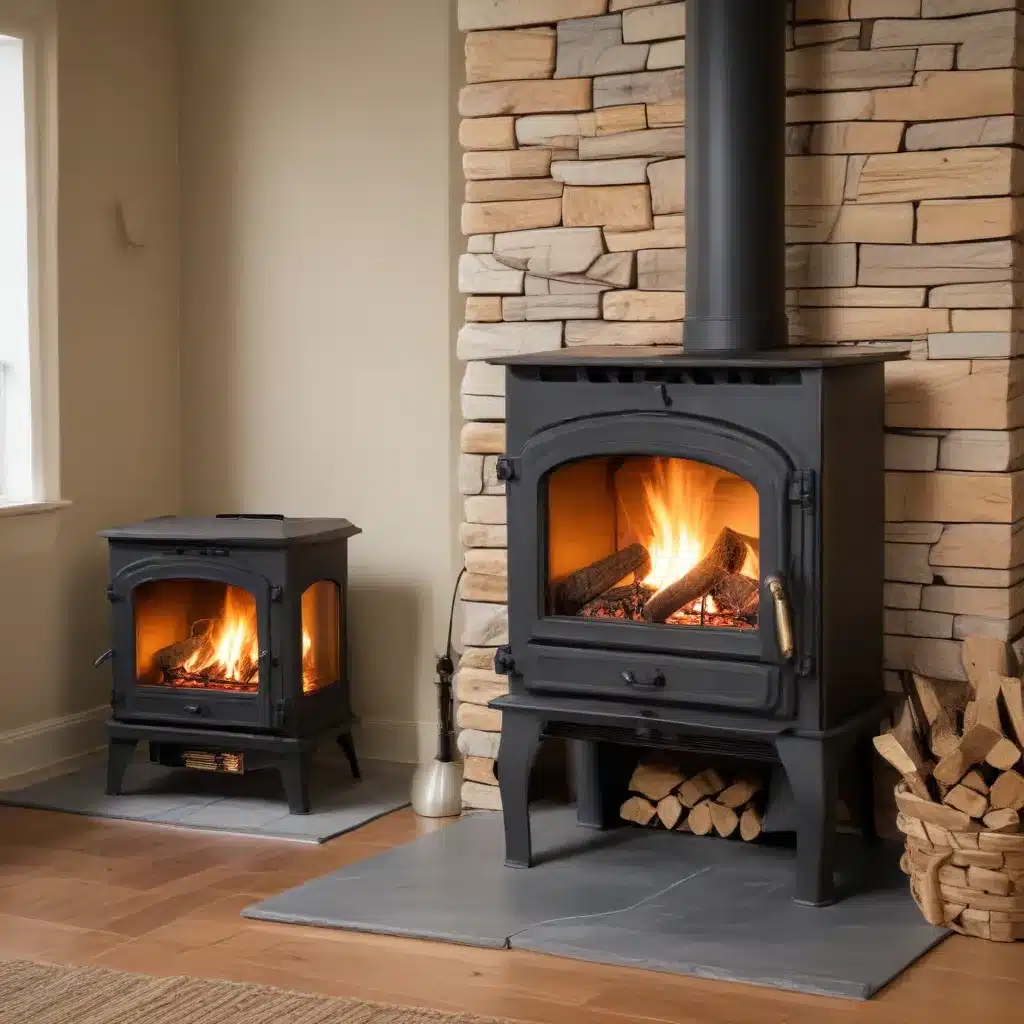
The Allure of Wood-Fired Heating
The crackle of a roaring fire, the dancing flames, and the warm glow they cast – there’s nothing quite like the ambiance of a wood-burning stove or fireplace. For centuries, wood has been a primary heating source, providing both comfort and practicality. However, as concerns over environmental impact and efficiency have grown, homeowners are rethinking their options when it comes to heating their homes.
In today’s world, where sustainability and energy-consciousness are paramount, the decision to install a wood stove requires careful consideration. While the appeal of a traditional wood-fired hearth remains strong, it’s essential to weigh the pros and cons, understand the environmental implications, and explore alternative heating solutions that can deliver the same cozy atmosphere with greater efficiency and reduced emissions.
Navigating the Wood Stove Landscape
Understanding Wood Stove Efficiency and Emissions
One of the primary concerns with wood-burning stoves is their impact on indoor and outdoor air quality. Older, inefficient models can release significant amounts of particulate matter and other pollutants, contributing to poor air quality and potential health risks. However, modern wood stove designs have made significant strides in improving efficiency and reducing emissions.
The EPA has established strict guidelines for certifying wood stoves that meet stringent emission standards. These EPA-certified models employ advanced combustion technologies, such as catalytic converters and secondary air injection, to maximize fuel efficiency and minimize harmful particulate emissions. When properly installed and maintained, these modern wood stoves can provide a sustainable and eco-friendly heating solution.
Factors to Consider When Choosing a Wood Stove
When selecting a wood stove, several key factors should be taken into account:
- Heating Capacity: Determine the appropriate size for your living space to ensure the stove can effectively heat the area without overworking or underperforming.
- Emissions and Efficiency Ratings: Look for EPA-certified models with high efficiency ratings and low emission levels to minimize the environmental impact.
- Fuel Source: Consider the availability and cost of wood fuel in your region, as well as the type of wood that burns cleanest and most efficiently.
- Installation and Venting Requirements: Ensure the stove can be properly installed and vented to meet local building codes and safety regulations.
- Aesthetic and Design Preferences: Choose a stove that complements the style and decor of your home, seamlessly blending function and form.
Proper Installation and Maintenance for Optimal Performance
Proper installation and regular maintenance are crucial for the safe and efficient operation of a wood stove. Consult with a qualified professional to ensure the stove is installed in accordance with local building codes and manufacturer guidelines. This includes properly sizing and positioning the stove, installing the appropriate venting system, and ensuring adequate clearance from combustible materials.
Ongoing maintenance, such as regular chimney cleaning, ash removal, and inspections for potential issues, will help maintain the stove’s efficiency, extend its lifespan, and minimize the risk of fires or other hazards. Taking the time to understand and adhere to the manufacturer’s recommendations can make a significant difference in the performance and longevity of your wood stove.
Exploring Alternative Heating Solutions
While the allure of a wood-burning stove remains strong, homeowners today have a wider range of heating options to consider, each with its own set of advantages and trade-offs.
Gas Fireplaces and Inserts
Gas-powered fireplaces and inserts offer a convenient and clean-burning alternative to traditional wood-fired heating. These systems typically feature electronic ignition, thermostatic controls, and high-efficiency designs that can provide consistent, even heating while minimizing maintenance requirements. Gas fireplaces can be a viable option for homeowners seeking the ambiance of a fireplace without the hassle of wood storage and ash removal.
Electric Fireplaces and Stoves
For those who prioritize ease of use and environmental considerations, electric fireplaces and stoves have become increasingly popular. These systems rely on electricity to generate heat and create the illusion of a real fire through the use of LED or halogen lighting, water vapor, and other innovative technologies. While they may not provide the same level of heating power as wood or gas-fired options, electric models offer a clean, low-maintenance, and often more affordable alternative.
Pellet Stoves
Pellet stoves are another environmentally-conscious heating solution that combines the aesthetic appeal of a wood-burning stove with advanced combustion technology. These stoves burn small, dense pellets made from compressed wood or agricultural waste, offering greater efficiency and reduced emissions compared to traditional wood stoves. Pellet stoves often feature automated feeding systems and thermostat controls, making them a convenient and user-friendly option.
Integrating Heating Solutions with Your Home’s Design
Regardless of the heating system you choose, it’s essential to consider how it will be integrated into your home’s overall design and layout. Wood stoves, gas fireplaces, and other heating appliances can serve as focal points, enhancing the ambiance and visual appeal of a living space.
When planning the installation, work closely with a professional to ensure the heating solution is positioned strategically, taking into account factors such as room size, furniture placement, and desired heat distribution. Explore customization options, such as custom surrounds, mantels, or built-in designs, to create a seamless and visually stunning integration that complements your home’s aesthetic.
Conclusion: Balancing Ambiance, Efficiency, and Sustainability
As homeowners navigate the evolving landscape of heating solutions, the decision to install a wood stove or explore alternative options requires a careful balance of ambiance, efficiency, and environmental sustainability. By understanding the latest advancements in wood stove technology, exploring innovative alternatives, and prioritizing proper installation and maintenance, you can create a warm, inviting, and eco-conscious living space that reflects your personal style and values.
Remember, the right heating solution is not a one-size-fits-all proposition. Consult with heating experts, consider your unique needs and preferences, and stay informed about the latest industry developments to make an informed decision that will keep your home cozy and comfortable for years to come. Visit the Wood Stove Heaters website to explore a wide range of heating products and resources that can elevate the ambiance and efficiency of your living space.


